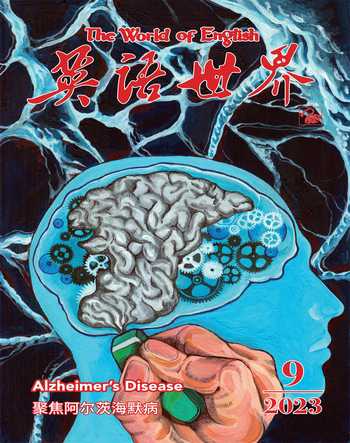Portrait of a Roman Lady《罗马妇人像》
爱艺/译
This portrait is one of several that Frederic Leighton created of the Italian model Nanna Risi, mistress and muse of the artist Anselm Feuerbach1. She is shown dressed in a variety of flowing fabrics, positioned against a background of blue-grey wallpaper and stuccoed Neoclassical ornamentation.
弗雷德里克·莱顿曾为意大利模特南纳·里西画过几幅肖像,此为其中之一。里西是画家安瑟尔姆·费尔巴哈的情人和灵感来源。此画中,她身着一件由多种平滑面料制作的衣裙,背景是蓝灰色的壁纸和新古典主义风格的灰泥装饰。
The high neckline, fabrics whose billowing obscures any bodily silhouette, and arms clasped around the body, seem to deny the viewer the kind of erotic frisson which the beauty of her face might imply, and yet Risis expression makes it very clear that this is not done out of defensiveness or weakness, but as a gesture of control. The strong features and almost imperceptible, subtly disdainful smile, combine with the downward angle of the gaze to create a sense of imperiousness. Similarly, the dramatic contrasts of coloring in hair and skin compliment the use of sfumato2, or smokiness, in the eyes, which at once beautifies and shrouds them in mystery.
高领口、遮掩身体轮廓的蓬松衣裙、搭绕身体的双臂——这些似乎抑制了观画者看到美丽面庞时可能产生的那种冲动,而里西的表情非常清楚地表明,她的姿态并非出于防御或源自软弱,而是呈现掌控的强势。线条分明的面部特征和几难察觉的隐隐蔑笑,加上略带俯角的凝视,给人一种傲慢的感觉。同样,头发和皮肤的颜色形成鲜明对比,突出了用晕涂法(可产生“烟熏妆”效果)描绘的双眼,这种技法既有美化作用,也营造了神秘感。
The contemporary reviewer F.G. Stephens wrote in The Athenaeum3 that the figure of Risi was “worthy of Lucrezia Borgia”, the noblewoman and reputed femme fatale of the Florentine Renaissance. Certainly, Leightons model seems to embody the seductiveness and ruthlessness associated with this historical figure, but the connotations of her expression and appearance also make other nods to Italian art history. The critic Richard Dorment notes that “the sfumato [...] and her thin smile evoke Leonardo4, while the lush, scumbled colors and luxurious fabrics recall Veronese5”. The latter was a comparison that Queen Victoria herself made with reference to Leightons style while describing her purchase of Cimabues Celebrated Madonna6.
同時代的评论家F. G. 史蒂芬斯在周刊《雅典娜》撰文表示,画中里西的形象“堪比卢克雷齐娅·波吉亚”,后者是文艺复兴时期佛罗伦萨的贵妇和人所共知的蛇蝎美人。确实,莱顿此画的模特看似表现出了那个历史人物所带的诱惑和无情的标签,但她的表情和仪容还暗含了向意大利艺术史再致敬的意味。艺术评论家理查德·多蒙特指出,“这幅画采用的晕涂法……和她淡淡的笑容让人想到达·芬奇,华丽、薄涂的色彩和奢华的面料则让人想起委罗内塞”。维多利亚女王在讲述自己购买莱顿的画作《奇马布埃的圣母》时,曾将莱顿的绘画风格与后者作比。
1(1829—1880),19世纪德国新古典主义画家,杜塞尔多夫学派、德国-罗马画派代表人物。他长期生活在意大利,认为意大利是实现自己理想的佳地,那里的古希腊罗马艺术与文艺复兴盛期的绘画为其创作提供了丰富养料。其前期作品优美细腻,后期充满痛苦及个人抗争。代表作有《伊菲革涅亚》《阿玛戎之战》《海滨》等。
2 sfumato〈意大利〉晕涂法,渐隐法,朦胧法。文艺复兴四大绘画技法之一(其他三个为换色法、明暗对照法和统合法),由达·芬奇所创,拉斐尔继承并发展,具有圆润柔和的独特风格。 3 1828年至1920年发行的英国文学周刊,由英国作家、记者和旅行家詹姆斯·西尔克·白金汉(1786—1855)创办。 4指Leonardo da Vinci列奥纳多·达·芬奇(1452—1519),意大利画家、自然科学家、工程师,欧洲文艺复兴时期的杰出代表,与米开朗基罗、拉斐尔并称“文艺复兴后三杰”(又称“美术三杰”)。 5指Paolo Veronese保罗·委罗内塞(1528—1588),意大利画家,与提香、丁托列托并称文艺复兴晚期威尼斯画派“三杰”。 6奇马布埃(约1240—1302),意大利画家,13世纪后半期率先进行风格革新,是乔托的老师,被奉为文艺复兴新艺术先锋。
- 英语世界的其它文章
- What Is Alzheimer’s Disease?何为阿尔茨海默病?
- The Facts About 6 Common Alzheimer’s Myths关于阿尔茨海默病常见的六种误解
- 7 Ways to Reduce Your Alzheimer’s Risk降低阿尔茨海默病患病风险的七因素
- Interacting with People with Alzheimer’s与阿尔茨海默病患者的相处之道
- When an Alzheimer’s Patient Says They Want to Go Home…当阿尔茨海默病患者说想回家时……
- 7 Films That Show the Truth About Living with Alzheimer’s揭示阿尔茨海默病患者真实生活的七佳片

